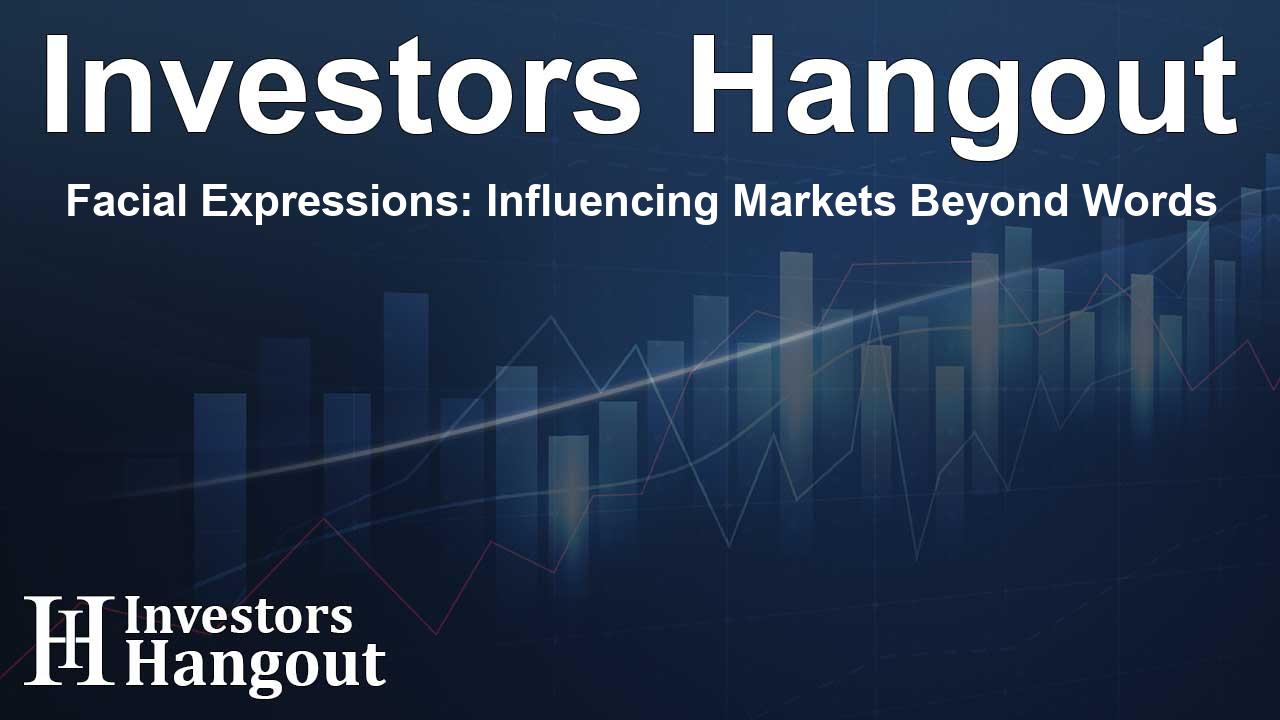Facial Expressions: Influencing Markets Beyond Words

The Impact of Emotion in Central Banking
The European Central Bank (ECB) plays a critical role in shaping financial markets, and recent research sheds light on how the emotions displayed by its presidents can significantly influence market behavior. This influence can be particularly noted when comparing current president Christine Lagarde and her predecessor, Mario Draghi.
Understanding the Study
A study titled "The Emotions of Monetary Policy" reveals an intriguing finding—each leader's facial expressions convey vital cues that traders consider when gauging future monetary policy. While traders closely listen to the words of central bankers, their emotions and expressions carry additional weight.
Researchers from Giessen University implemented advanced technology to analyze the facial expressions and emotional tones exhibited by Lagarde and Draghi during press conferences following ECB interest rate decisions. These insights have unearthed a fascinating dynamic in the way emotions can shape financial landscapes.
Lagarde and Draghi: A Study in Contrasts
The findings of the study are striking. It appears that Mario Draghi's effusive smiles enhanced the impact of his monetary policy communications, whether he was signaling optimistic or pessimistic trends. The results suggest that a cheerful demeanor can bolster the effectiveness of his messages significantly.
The Insights of Emotional Communication
In contrast, Christine Lagarde can amplify her market influence through a more intense demeanor, particularly portraying anger, which seems to resonate more deeply during challenging financial periods. The study indicates that an angry expression during critical market discussions can enhance the hawkish impact on bond yields.
This reflection on expressions reveals that Lagarde, despite showcasing more emotion on average than Draghi, often mirrors the gravity of the economic situation she addresses. More notably, both presidents tend to express increased frustration as inflation levels stray from the ECB's target of 2%.
Implications for Financial Markets
The implications of this research could be profound for traders, policymakers, and financial analysts. Understanding the non-verbal cues presented by central bankers during critical decision-making moments can serve as an additional tool in predicting market movements. The academic team behind the study hopes it will help in emphasizing the power of emotional communication.
Historical Context
The findings also resonate with historical practices in central banking. Financial historians recall how, in earlier decades, leaders could dictate market behavior with merely a raised eyebrow or slight change in expression. This historic precedent underscores the perennial importance of emotional cues in economic discussions.
In summary, as markets continue to evolve, so too must the strategies employed by traders and policymakers. Recognizing that facial expressions and emotional undertones are key components of central banking communications can lead to more informed decision-making in the ever-volatile world of finance. As research continues to unfold, the relationship between non-verbal cues and market movements will only deepen, potentially reshaping how stakeholders approach financial trading.
Frequently Asked Questions
What was the main finding of the study regarding Lagarde and Draghi?
The study highlighted that Mario Draghi's smiles enhanced his market influence, while Christine Lagarde's anger could boost her hawkish signals.
How do traders respond to facial expressions from central bankers?
Traders often interpret facial expressions as signals for future interest rates and monetary policy moves.
What can the findings indicate for future monetary policy discussions?
The research emphasizes the importance of emotional presentation, encouraging policymakers to be mindful of non-verbal cues.
Are similar studies being conducted in other financial institutions?
Yes, research has shown that emotions expressed by leaders in various financial institutions also impact market behavior.
How might this research shape trading strategies?
Traders may incorporate emotional analysis into their strategies, paying attention to non-verbal cues in addition to spoken words.
About The Author
Contact Addison Perry privately here. Or send an email with ATTN: Addison Perry as the subject to contact@investorshangout.com.
About Investors Hangout
Investors Hangout is a leading online stock forum for financial discussion and learning, offering a wide range of free tools and resources. It draws in traders of all levels, who exchange market knowledge, investigate trading tactics, and keep an eye on industry developments in real time. Featuring financial articles, stock message boards, quotes, charts, company profiles, and live news updates. Through cooperative learning and a wealth of informational resources, it helps users from novices creating their first portfolios to experts honing their techniques. Join Investors Hangout today: https://investorshangout.com/
The content of this article is based on factual, publicly available information and does not represent legal, financial, or investment advice. Investors Hangout does not offer financial advice, and the author is not a licensed financial advisor. Consult a qualified advisor before making any financial or investment decisions based on this article. This article should not be considered advice to purchase, sell, or hold any securities or other investments. If any of the material provided here is inaccurate, please contact us for corrections.
